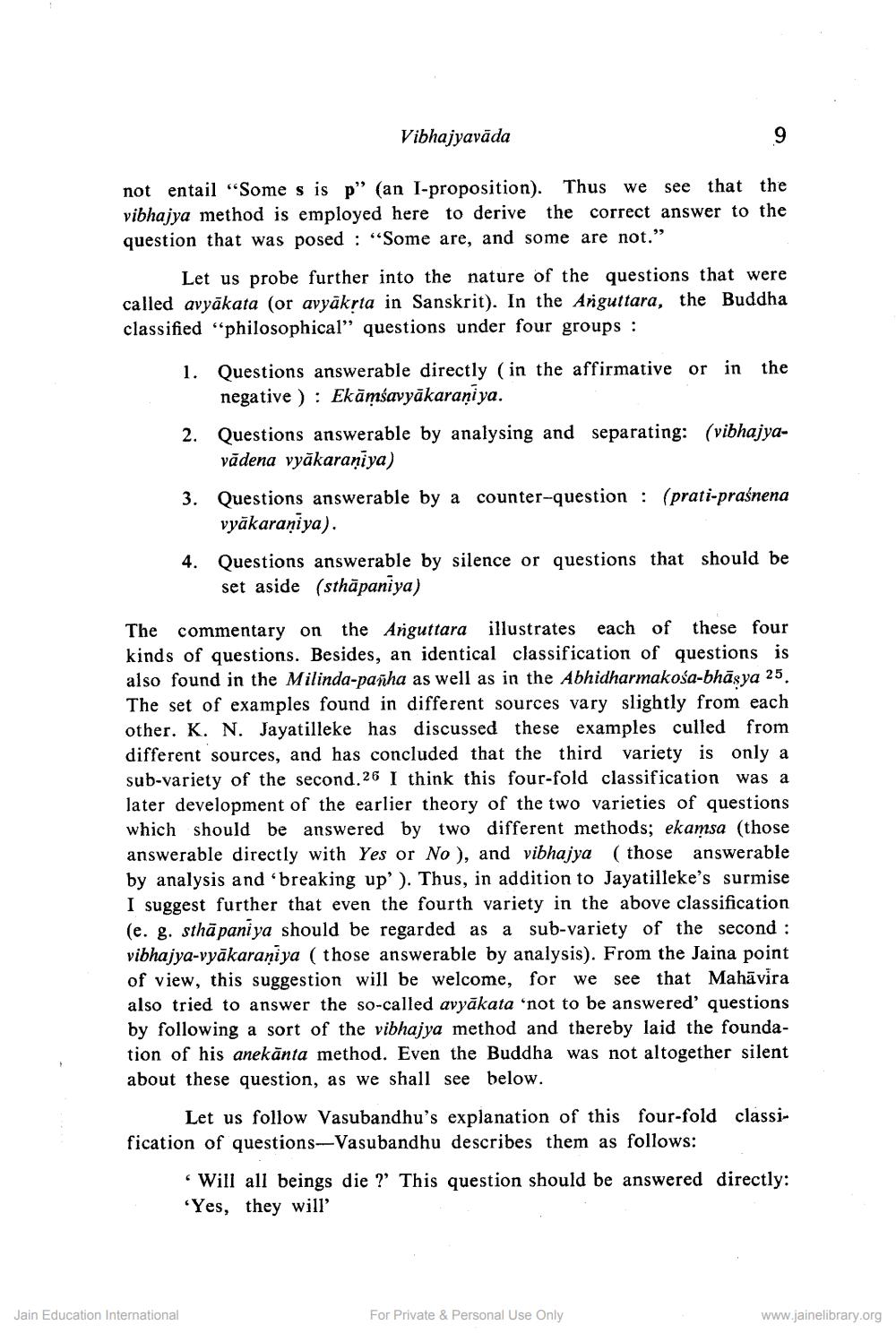________________
Vibhajyavāda
not entail "Some s is p" (an I-proposition). Thus we see that the vibhajya method is employed here to derive the correct answer to the question that was posed : “Some are, and some are not.”
Let us probe further into the nature of the questions that were called avyākata (or avyäkrta in Sanskrit). In the Arguttara, the Buddha classified “philosophical" questions under four groups :
1. Questions answerable directly (in the affirmative or in the
negative ) : Ekāmśavyākaraniya. 2. Questions answerable by analysing and separating: (vibhajya
vădena vyākaraniya) 3. Questions answerable by a counter-question: (prati-praśnena
vyākaraniya). 4. Questions answerable by silence or questions that should be
set aside (sthāpaniya)
The commentary on the Ariguttara illustrates each of these four kinds of questions. Besides, an identical classification of questions is also found in the Milinda-panha as well as in the Abhidharmakośa-bhäsya 25. The set of examples found in different sources vary slightly from each other. K. N. Jayatilleke has discussed these examples culled from different sources, and has concluded that the third variety is only a sub-variety of the second.26 I think this four-fold classification was a later development of the earlier theory of the two varieties of questions which should be answered by two different methods; ekamsa (those answerable directly with Yes or No ), and vibhajya (those answerable by analysis and breaking up'). Thus, in addition to Jayatilleke's surmise I suggest further that even the fourth variety in the above classification (e. g. sthā pani ya should be regarded as a sub-variety of the second : vibhajya-vyākaraniya (those answerable by analysis). From the Jaina point of view, this suggestion will be welcome, for we see that Mahāvira also tried to answer the so-called avyākata 'not to be answered questions by following a sort of the vibhajya method and thereby laid the foundation of his anekānta method. Even the Buddha was not altogether silent about these question, as we shall see below.
Let us follow Vasubandhu's explanation of this four-fold classification of questions--Vasubandhu describes them as follows:
· Will all beings die ? This question should be answered directly: “Yes, they will
Jain Education International
For Private & Personal Use Only
www.jainelibrary.org




